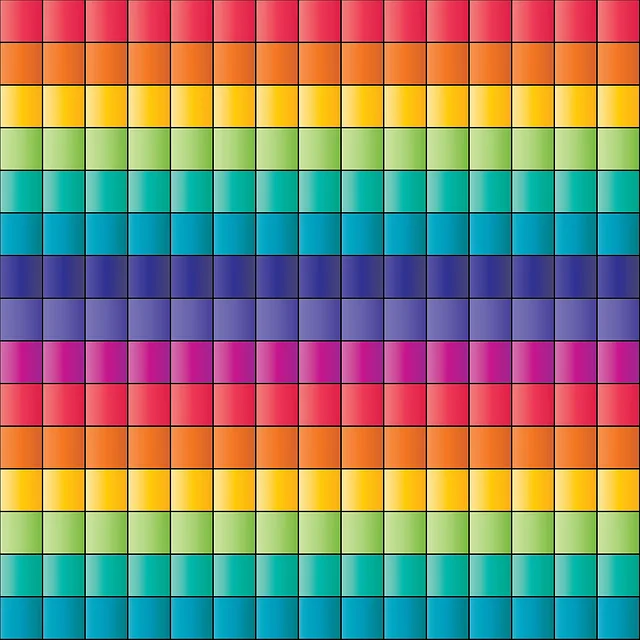Muscle soreness, particularly delayed onset muscle soreness (DOMS), frequently occurs after new or intense physical activities and is a natural response to microtrauma within muscle fibers. Understanding DOMS is crucial for managing and progressing exercise regimens effectively; factors like the type, volume, and intensity of exercise, as well as individual differences, influence its severity and duration. High eccentric load exercises, such as those in k shot training (kettlebell swings and squats), often provoke significant muscle soreness. To mitigate this, a proper warm-up and cool-down are recommended, along with gradual intensity increases. Additionally, strategies like foam rolling, massage therapy, and active recovery can alleviate muscle tightness and enhance flexibility.
K shots, which involve the administration of ketamine, have become a significant therapeutic option for muscle recovery and pain management, especially for DOMS and chronic pain sufferers. Ketamine works by modulating pain signals in the central nervous system and offers anti-inflammatory and antioxidant effects, facilitating faster recovery and improved performance for athletes. It's particularly useful for acute injuries requiring immediate relief from pain.
Hyaluronic acid-based K Shots can enhance joint lubrication and synovial fluid quality, supporting muscle health and flexibility. A balanced workout plan incorporating low-impact exercises like Pilates or yoga, alongside stretching routines, can maintain muscle elasticity and mobility. Integrating K Shots with a tailored exercise regimen that avoids overloading specific muscle groups can effectively mitigate muscle soreness, advance fitness goals, and contribute to long-term musculoskeletal health. This holistic approach not only eases discomfort but also supports overall physical well-being.
Embarking on a fitness journey can sometimes lead to muscle soreness, a common experience that may hinder progress. This article delves into the science behind muscle soreness, its triggers, and the innovative approach of K shots—a promising method for recovery and pain management. We’ll guide you through crafting a tailored workout regimen that complements the benefits of K shots, ensuring you can continue to pursue your fitness goals without the constraints of discomfort. Join us as we explore how this dual strategy can enhance your muscle health and keep you moving forward.
- Understanding Muscle Soreness and its Causes
- The Role of Ketamine (K Shots) in Muscle Recovery and Pain Management
- Crafting a Customized Workout Plan to Alleviate Muscle Soreness with K Shot Support
Understanding Muscle Soreness and its Causes

Muscle soreness, often experienced as delayed onset muscle soreness (DOMS), can occur after engaging in unfamiliar or intense physical activities. This phenomenon is a natural response to microtrauma within the muscle fibers and is part of the body’s adaptation process to new types of exercise or increased intensity. Understanding the underlying mechanisms of muscle soreness is crucial for effective management and continued progression in one’s workout regimen. The severity and duration of muscle soreness can vary, with factors such as the type of exercise, intensity, volume, and individual differences all playing a role. For instance, activities involving eccentric contractions, like kettlebell swings or squats—commonly utilized in k shot training—are known to induce significant muscle soreness due to the nature of these movements stretching the muscles beyond their accustomed length. Proper warm-up and cool-down routines, along with gradual progression in exercise intensity, can mitigate the risk and impact of muscle soreness, allowing for consistent training and better recovery. Additionally, modalities such as foam rolling, massage therapy, and active recovery exercises may aid in alleviating muscle tightness and improving overall flexibility, contributing to a more robust approach to managing muscle soreness.
The Role of Ketamine (K Shots) in Muscle Recovery and Pain Management

Ketamine, commonly known as K shots, has emerged as a promising therapeutic option for muscle recovery and pain management, particularly for individuals experiencing soreness. Traditionally used as an anesthetic, ketamine’s antagonist effects on the NMDA receptor have been found to modulate pain signals in the central nervous system, offering relief from chronic pain conditions. This unique mechanism allows for a reduction in the perception of muscle soreness without the opioid-related side effects, making it an attractive alternative for those looking to manage pain effectively.
Furthermore, recent studies suggest that ketamine infusions can aid in muscle recovery by promoting anti-inflammatory responses and reducing oxidative stress. The rapid onset of its analgesic effects makes it particularly useful for acute injuries or conditions where immediate pain relief is necessary. Subcutaneous K shots, a form of ketamine administration, have been shown to alleviate muscle soreness associated with intense workouts or overuse injuries, allowing individuals to return to their training regimens more quickly and with improved performance. This makes it an invaluable tool for athletes and fitness enthusiasts who are looking to mitigate the effects of muscle soreness while maintaining a rigorous workout routine.
Crafting a Customized Workout Plan to Alleviate Muscle Soreness with K Shot Support

When muscle soreness arises from intense workouts, adapting a workout plan to mitigate discomfort is crucial for maintaining an active lifestyle. A customized routine that incorporates K Shots—a therapeutic injection containing hyaluronic acid—can be a pivotal component in alleviating muscle soreness. K Shots, administered by healthcare professionals, help to lubricate joints and can promote faster recovery by enhancing the quality of the synovial fluid within the joint spaces. This, in turn, supports the muscles’ health and flexibility, which is particularly beneficial for those engaging in frequent physical activity or recovering from an injury.
Crafting a workout plan that complements K Shot therapy involves selecting exercises that target different muscle groups without overloading any single area. The focus should be on low-impact activities that encourage blood flow and promote healing while minimizing strain. For instance, incorporating Pilates or yoga can improve muscle balance and joint stability, reducing the risk of soreness. Additionally, integrating stretching routines can maintain muscle elasticity and mobility, which is essential for overall musculoskeletal health. By combining K Shot therapy with a thoughtfully designed workout regimen, individuals can effectively manage muscle soreness and enhance their fitness journey.
Muscle soreness can be a significant impediment to maintaining an active lifestyle. Understanding its origins and exploring effective remedies, such as the innovative use of K Shots, provides a pathway to recovery and pain management. By tailoring workout regimens to complement the benefits of Ketamine infusions, individuals can experience targeted relief and continue their fitness journey with renewed vigor. This article has delved into the science behind muscle soreness, the potential of K Shots in healing and pain reduction, and how personalized exercise plans can be an integral component of a holistic approach to wellness. With this knowledge, athletes and fitness enthusiasts can better navigate their road to recovery and optimal performance.






